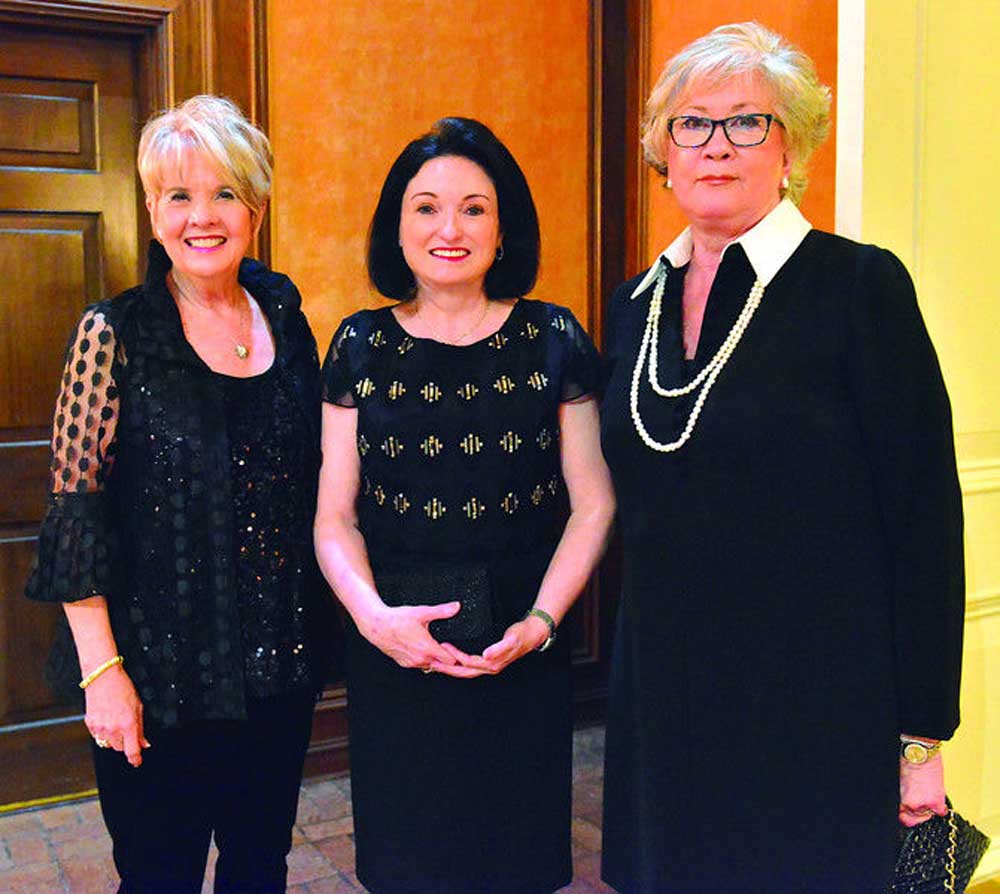The Biedenharn legacy: Philanthropic family funneled riches from bottling Coca-Cola into unusual mix of museums, botanical garden
Published 12:10 pm Wednesday, July 13, 2016
DANNY MOGLE
dannyinmagtexas.com
The treasures of ELsong Garden in Monroe, Louisiana, do not reveal themselves all at once. To discover many of the fountains, pools, benches, statues and beds of seasonal flowers, one must venture off the central lawn into a series of smaller, more intimate, settings.
The botanical garden is part of the legacy of the Joe Biedenharn family, who made its fortune as bottlers and distributors of Coca-Cola. In 1894, while operating a candy store in Vicksburg, Mississippi, Joe became the first person to bottle the popular new soft drink.
In 1913, he bought a bottling plant in Monroe and the following year built a stately home in the city’s garden district along the Ouachita River. The Biedenharns originally used the home’s large backyard to raise vegetables and as a place for a few geese to hang out.
After a successful career performing as a contralto in recitals and operas in Europe throughout the 1930s, Joe’s only daughter, Emy-Lou, returned home and made it her mission to transform the backyard. She wanted a showplace of nature with lots of flowers amid walking paths, fountains and statues – just like those she had enjoyed in Europe.
After listening to Emy-Lou’s desires, Houston landscape architect C.C. Fleming designed a formal English-style garden with a wide central lawn leading to a large fountain and flanked by a series of connecting smaller courtyards with different themes.
Emy-Lou loved it so much she proudly proclaimed it to be a living song she would forever share with others and named it ELsong, short for Emy-Lou’s song.
Ralph Calhoun, executive director of the Biedenharn Foundation, pointed out the garden’s five larger-than-life female Grecian-like statues supporting large decorative bowls on top of their heads. The striking statues, which weigh 1,700 pounds each, rest on top of brick pedestals on each corner of the great lawn and behind the lawn’s large fountain.
“She purchased them during a trip to New Orleans,” Calhoun said.
A brick path to one side leads to the Garden of the Four Seasons, one of the smaller gardens within a garden. Here, raised beds of annuals surround a fountain in a lotus leaf design. The focal part of the adjacent small Japanese Garden is an oriental-style pagoda with intricate ornamental ironwork and topped by a finial. The largest feature of the garden is The Conservatory, a large glass-enclosed greenhouse where tropical plants and delicate flowers are raised and other flowers are displayed.
HOME, BIBLE MUSEUM
Visitors to the garden also can tour the two-story Biedenharn home and adjacent Bible Museum as well as the Coke Museum on the same block.
The home is furnished as it was during the years Emy-Lou lived there from 1939 until her death in 1984. The downstairs parlor displays a grand piano that visitors are encouraged to play. A room on the second story overlooking ELsong is devoted to Emy-Lou’s career as professional singer and includes photographs of her in costume and on stage.
“Listen to this,” said Calhoun as he played a recording of Emy-Lou singing. The Bible Museum holds Emy-Lou’s collection of historically significant and unique Bibles, including a page from the Gutenberg Bible and two of the earliest Bibles known to have been printed in North America.
Over the years, the collection has grown to include an original King James Bible from 1611, Russian icons and other religious-themed artwork and artifacts. Fourteen bronze sculptures depicting scenes from the life of Christ are on loan from the Museum of Biblical Art in Dallas.
COKE MUSEUM
In the Coke Museum, visitors can watch a video telling the story of the Biedenharn family over several generations and the evolution of the bottling and distribution of Coca-Cola.
In the soda fountain room, docent Linda Aulhern enthusiastically shows off the original style of bottle in which Joe first sold and shipped Coke and shares how the shape and labeling of the bottle changed over the years.
“During the first years, you took it (bottle) back to them and they cleaned by sloshing it in the Mississippi (River) and used it again,” she said. “Later they began sterilizing the bottles. As you can imagine that was a big improvement.”
Among the memorabilia on display are an early delivery truck, Coca-Cola signs, posters, bottles and vending machines, including a working machine from which you can buy a bottle of Coke for only a nickel.
Admission, which is good for both museums, the home and garden, costs $6 for adults and $4 for children. Tickets are purchased in the gift shop in the Coke Museum. Biedenharn Museum and Gardens is open 10 a.m. to 5 p.m. Tuesdays through Saturdays.






